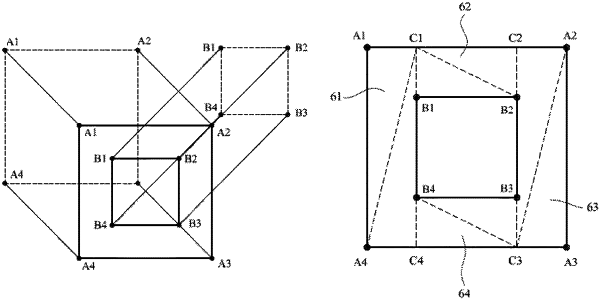| CPC G06T 17/205 (2013.01) [G06T 2210/04 (2013.01)] | 20 Claims |

|
1. A method for generating a virtual representation of an interior space such as a room, comprising:
obtaining a first set of three-dimensional coordinates and at least one further set of three-dimensional coordinates, wherein the first set of three-dimensional coordinates comprises three-dimensional coordinates representing three-dimensional positions of points located on edges of walls of the interior space, and wherein each of the at least one further set of three-dimensional coordinates comprises three-dimensional coordinates representing positions of points located on edges of an extrusion in one of the walls of the interior space; and
generating a polygon mesh representing the three-dimensional shape of the interior space, wherein generating the polygon mesh comprises:
using the first set of three-dimensional coordinates to determine planes representing the walls of the interior space without considering any extrusions in the walls; and
for each wall with one or more extrusions, using the respective determined plane and the respective one or more of the at least one further set of three-dimensional coordinates to determine a plurality of sub-planes that do not individually enclose the extrusion, and performing a polygon generation process on the plurality of sub-planes to generate a plurality of sub-meshes that in combination represent the respective wall excluding the respective one or more extrusions, wherein the polygon generation process comprises generating triangles from individual sub-planes of the plurality of sub-planes; and combining the plurality of sub-meshes into a mesh representing interior surfaces of the interior space.
|